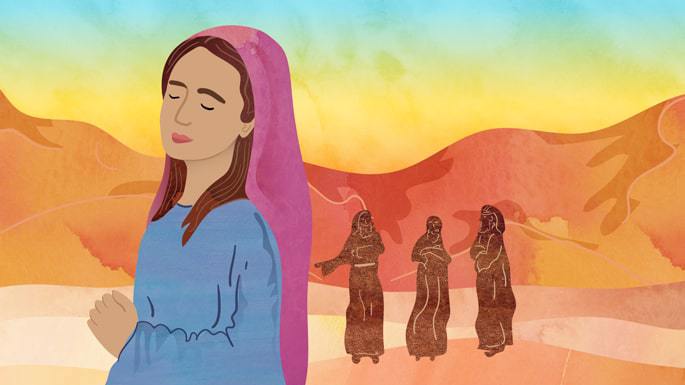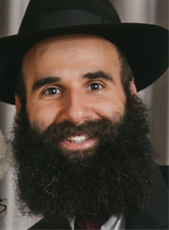1. She Was the Daughter of Jacob and Leah
Scripture tells us that Jacob’s four wives bore 12 sons. After we read of the birth of 10 sons (six of whom were born to Leah),1 we are told, “And afterward, [Leah] bore a daughter, and she named her Dinah.”2
Read: 13 Leah Facts
2. Her Mother Prayed for a Girl
Unlike her brothers, Dinah’s name comes with no explanation in Scripture as to why it was given. Dinah means “judgment,” and the Sages explain that Leah chose it because she had passed judgment on herself.
By that time, Leah had six sons, and an additional four boys had been born to the maids, Bilhah and Zilpah. Knowing prophetically that only 12 sons were to be born to Jacob, Leah realized that if she would have a seventh son, there would be just one left for her sister, Rachel, to bear—even fewer than the maids. She prayed to G‑d, and her fetus turned out to be a girl.3
3. Jacob Protected Her from Esau
Dinah was born when the family lived in Padan Aram, near her grandfather, Laban. As Jacob moved them back toward the Holy Land—his birthplace—they encountered her rogue uncle, Esau. Jacob introduced his four wives and their sons to his brother, but not Dinah. Where was she? Jacob hid her in a box so that Esau would not set eyes on her and desire to marry her. But, the sages say, if she would have married Esau, there is a chance she could have positively influenced him, and this was seen as a tragic missed opportunity.4
Read: 14 Esau Facts
4. She Was Raped and Abducted
After the family settled near the city of Shechem, the local prince, whose name was also Shechem, saw her, desired her, raped her, and took her to his home. He then brazenly sent his father, Chamor (which means “donkey”), to ask Jacob for her hand in marriage.5
Read: Dinah’s Rape
5. Her Brothers Rescued Her
When her brothers, especially Simeon and Levi, found out that Dinah had been violated and taken against her will, they were horrified. They had Chamor get all of male townspeople to circumcise, ostensibly as a prerequisite to mix with the Chosen People, and then, when they were all deep in pain, they killed the men, whom they saw as complicit (or even accomplices6 ) in the act, and rescued Dinah from Shechem’s house.7
Read: A Time to Kill
6. She Is Said to Be the Mother of Aseneth
Dina’s brother, Joseph, was sold to as a slave to Egypt, where he eventually rose to great power. There, he married Aseneth (Osnat), “daughter of Potiphera.”8 According to one rabbinic tradition, Aseneth was Dinah’s daughter, born after she was impregnated by Shechem.9
7. She Descended to Egypt
After the episode of her abduction, Dinah appears once again in Torah: in the list of “70 souls” who moved to Egypt with Jacob.10
8. She Is Said to be the Mother of Saul
The list of Jacob’s progeny includes a certain “Saul, the son of the Canaanite woman” among the sons of Simeon. Who was the Canaanite woman? According to one tradition, she was Dinah, who was thus named because she had been violated by a Canaanite. After her rape, she was afraid that no one would ever consider her for marriage, and Simeon swore to her that he himself would marry her, and he did. Their union produced Saul, who was dubbed “son of the Canaanite woman.11 This Saul should not be confused with King Saul, from the tribe of Benjamin, who lived many hundreds of years later.
Read: 14 Jewish Marriage Facts
9. Some Say She Married Job
Job (Iyov), the long-suffering protagonist of the Book of Job, is a mysterious figure, and the sages debate when and where he lived (and even question whether he lived at all). According to one tradition, he lived in the days of Jacob and was married to none other than … Dinah!12
Read: Who Was Job?
10. She Is Buried in Arbel
There is a longstanding tradition that Dinah was buried in Arbel, north of Tiberias, not far from Lake Kinneret, along with some of her brothers.13 This spot can be visited today, along with several other tombs and an ancient cemetery.











Join the Discussion